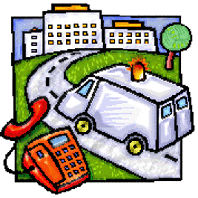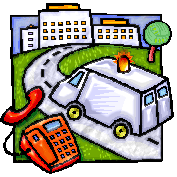
Starting a new job is exciting, but just a bit scary too. For me it means leaving something secure and familiar for a job that is new and challenging, one that requires implementation of a different and yet untried skill set. So I had mixed emotions when I was advised that I had been successful in my application and had been hired for the new AADAC Addictions/Tobacco Cessation information line at Capital Health Link SEE:http://corp.aadac.com/news/PDF/WNTD_BKGND_prov.pdf).
The line itself is not a new concept, AADAC has been operating an information 1-800 number for years. However they have now contracted it out to Capital Health Link, and have added a new dimension – tobacco cessation. As a relatively new venture, they are not completely sure what to expect. For callers seeking help with tobacco addiction, we are to be counselling and doing follow-up support, but for other addictions we are simply giving referral information and are to do no counselling.
Learning at a distance has made me aware of both the challenges and the benefits of non face-to-face communication, and I am intrigued by the possibilities of telephone and internet counselling. My training started on July 22 and I’ve completed a long and exhausting first of two weeks. It was like being in school again. I’m used to being in the learning mode, so this was not totally unfamiliar to me, although we often found ourselves on information overload. I found it extremely interesting most of the time, but it was physically difficult to sit for 8 hours a day – made me realize why I prefer distance learning!
Three full days were spent at the AADAC offices, where we received an intensive addictions overview. Much of the information was not new to me (in fact one session was almost a refresher for Psych 402 – Biological Psychology), but it was interesting to listen to people who deal with addictions on a daily basis. Although we are not to be offering counselling, it is essential that any person answering this help line have an understanding of addictions and be as non-judgemental as possible. Right from the outset we were advised that people calling for help are often so happy to actually connect to a “live” person on the phone – that they will often want to share all their problems with us. So we need to be prepared for almost anything. The majority of our calls will relate to smoking and alcohol, but we also will be giving information and referrals for other addictions, including drugs, gambling, internet, and more. Many of our calls will be from family members; mothers worried about a child’s drug use; children who want to help their parents quit smoking; adults in the “?sandwich generation’ concerned about a senior’s prescription drug use and/or drinking; a husband whose wife is gambling. Addictions come in many forms and are extremely complex.
The session on gambling addiction in particular was somewhat of an eye-opener. The psychology and physiology of gambling addiction is a field that is just beginning to be researched. Understanding gambling addiction and developing treatment strategies is at a stage comparable to where knowledge and understanding of alcohol addiction was 50 years ago. A couple of points made me stop and think: VLT’s appear to have a hypnotic effect on some problem gamblers, prompting them to go on gambling binges that can last for days. In some extreme cases, VLT gamblers may become dissociated from reality, and AADAC has seen some dramatic examples of this. Most thought provoking of all, however, was hearing the statistics relating to youth gambling. There has been a sharp increase in teen gambling, particularly VLT’s, and the AADAC counsellor giving the presentation suggested this may be related to the whole culture that has taught children to seek comfort and release in front of a computer or television screen.
We go “live” with our first call on August 6. I’m eagerly anticipating the day, and I hope I will be up to the challenge. As a musician I’ve always been aware of the power of the human voice. Now I will be taking that power and learning how to use it in isolation. This is not a simple task, since we rely heavily on visual cues in our daily communication. According to the NAIT training session on Call Centre techniques, 7% of a message is conveyed with words, while nonverbal (visual) behaviour makes up 55% of the message, and tone of voice the other 38%. Operating the AADAC line means that I will have lost more than half of my normal communication abilities and will be relying only on my voice to convey my empathy to clients calling for assistance.
As students learning at a distance we have had to learn how to communicate on a completely different level, one that excludes the visual. Non-visual forms of doing business are increasingly becoming the norm. Telephone, internet and email are used more often than face-to-face communication in many companies, and it is likely that this trend will continue. What does this mean for AU students? I’ve had some students ask me if our degree will be viewed as somehow less valuable than one achieved in a campus-based university. I think the opposite is true. Not only are we receiving an education that is equivalent in quality, we are learning how to utilize new technologies to the fullest, and most importantly, we are developing essential non-visual communication skills. These skills are highly marketable in the new global environment in which we find ourselves, and are a positive result of distance learning. I believe these skills will serve me well as I embark on a new career path.
Debbie is a native Edmontonian, a single parent with four daughters. She has worked as a professional musician for most of her life, and has enjoyed a rich variety of life experiences – with many more to come! Debbie is working towards an eventual doctorate in psychology, and currently serves as the president of the Athabasca University Students’ Union.


